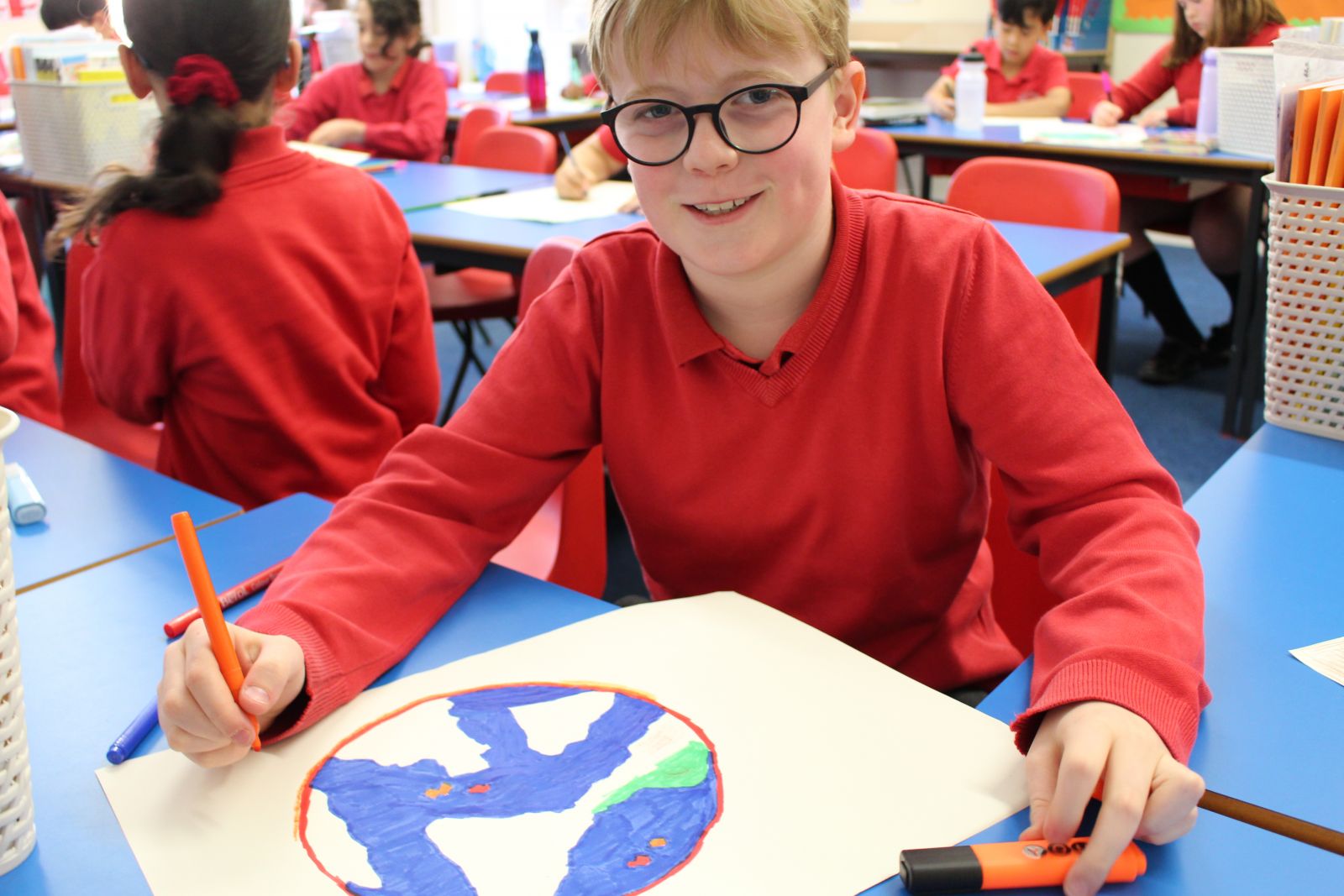
Our Geography curriculum gives children the knowledge to understand their place in the world, through the study of people and their environments. This includes a study of our local areas as well as different cultures and societies across the world, and learning is extended through considering environmental issues. Our pupils develop their knowledge about globally significant places and learn how to use geographical skills to analyse data and other sources of information such as maps, aerial photographs, globes.
What is special about our curriculum?
Our curriculum is based on the National Curriculum, but with a focus on our local geography. Where possible, we engage the local community to bring geographical issues to life for our children. There are many hands-on learning opportunities throughout our Geography curriculum. In KS1, we focus on understanding our local geography and incorporate many local area walks. Children are encouraged to notice the human impact on their local environment. Children visit human and physical features such as the River Thames. Other visits include a local theatre company visiting the school to demonstrate how geographical elements of the earth work such as Climates and Biomes and Mountains, Volcanoes and Earthquakes.
What is the structure of teaching and learning?
Geography is taught for one hour per week, for three half terms per year, Our children will experience a variety of teaching styles and approaches, which enhance the learning outcomes of the curriculum. The curriculum structure supports children in developing secure knowledge and understanding of the geography areas: local, national and worldwide.
What will children achieve by the end of EYFS, KS1 and KS2?
EYFS
Children will be able to describe similarities and differences in relation to place. They will be encouraged to describe features of their environment and understand that the environment and living things within it can be affected by human activity.
Key Stage 1
In KS1, children will build on their understanding of their local area and be able to distinguish between human and physical features. They will start to identify the features of our planet, such as continents and oceans, and understand how we are connected to the rest of the world. They will be able to understand the human impact on physical features of the earth. They will compare different settlements and be able to identify similarities and differences between town and country.
Key Stage 2
In KS2, children will develop their understanding of the world by making comparisons to other countries across the globe. They will understand how weather and climate differs across the world and discuss the human impact on climate. They will look more closely at specific physical features such as the coast, volcanoes and mountains. Children will be taught about the world’s natural resources and how they are traded between countries. They will gain a greater understanding of the geographical changes that occur throughout the world due to factors such as climate change and migration.
